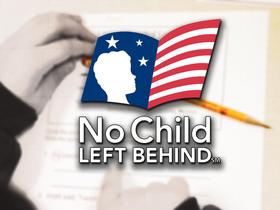Based upon requirements mandated by both the federal government and the state government, public schools are obligated to report their student body’s progress and test results each school year. As the United States Department of Education asserts, “All states and schools will have challenging and clear standards of achievement and accountability for all children, and effective strategies for reaching those standards.”
In light of recent national educational guidelines and standardized testing mandates, individual states have started to implement their own sets of learning and development standards. With every state providing schools and educators with educational goals and benchmarks, many parents and leaders are concerned about their local schools’ progress and achievement. With regulations shifting in various subject areas in states nationwide, leaders want to know: are the schools succeeding?
Student Progress and Reports
While each school has its progress records, the national average statistics show that public school students struggle to meet the established standards. According to Education Portal, the most recent NAEP test results show that approximately 1/3 of American fourth-grade students are below proficiency in reading, math, science, and American history.
Adding to this deficit, when comparing our schools to others worldwide, our eighth-grade students earned a 19 out of 38 ranking in the comprehension areas of math and an 18 out of 38 in science. Similarly, U.S. twelfth-grade students were ranked 18th out of 21 countries in math and science. These troubling findings seem authentic in various areas and school districts nationwide. Although there are several high-ranking public schools in the United States, educational leaders are trying to uncover why so many students and schools are still struggling.
Investigating its state-wide progress, the Journal Gazette uncovered the progress of Indiana Public Schools. Reports reveal that almost half of the Indiana schools have been ranked at the bottom of the state’s accountability guidelines. 47 percent of the Indiana schools were labeled with “academic probation” or “academic watch” alerts.
Typically, when students and schools fail to meet state-based standards, they fail to meet the required national standards. Most importantly, without meeting the standards, experts argue that students are not reaching optimal learning goals. Adding to this problem, a failure to meet either national and/or state standards over several years can result in drastic funding cuts, potentially even leading to school closings.
Problems and the Quest for Solutions
Attempting to explore the many possible reasons why students and schools are struggling, the Education Portal asserts that there are five main areas of failure in the public systems. Although people tend to assume that the main problem with education is the lack of funding, recent studies show a far deeper problem with the system's foundation. Specifically, leaders claim that the main problems of education include five specific issues:
- A lack of accountability – Schools are not forced to terminate unsuccessful teachers, and schools are not required to make significant changes aside from monitoring student achievement.
- Wasted funds – Since 1960, the amount of money spent on each public school student has more than tripled; however, there is no risk or consequences for public school leaders who use funds for non-academic purchases or who choose to use funds in ultimately ineffective manners
- Political agendas – Teachers are commonly forced to alter their teaching methodologies to meet the orders from the state legislature. Subsequently, political leaders are making educational decisions, while highly qualified educators are forced to obey the mandates—even if the mandates are ineffective
- Standardized educational models – Public schools lack diversifying programs, as some extremely gifted students are forced to take regular-paced classes, while students who are cognitively impaired are often still required to meet the same standards as a “regular” or “average” student.
- No Child Left Behind (NCLB) – Although NCLB, a national educational initiative, was intended to help equalize public schools, leaders argue that the mandates place far too much emphasis on test scores and punitive consequences. Adding to this, “What's worse is that school districts have been forced to train students for NCLB tests versus offering them the education they deserve.” Ultimately, many educators believe that NCLB distracts students from learning, as valuable classroom time must be dedicated to standardized test-taking strategies and practice.
What about Your Child’s School?
All public school progress (achieved by state and/or national assessments) is legally required to be posted for the public to view. To find out if your child’s public school is struggling or succeeding, check with your school’s website or academic counseling office. If, in an unfortunate case, your child’s school fails to meet standards, public institutions must give parents written notice of student body failures within 30 days of a school’s accreditation rating. Moving forward upon this notice, nearly all schools must provide the public with an open forum to collectively decide on an action plan. Upon an agreed-upon action plan, public school leaders will work through a process of re-accreditation with their local, state, and national school board colleagues.
Questions? Contact us on Facebook. @publicschoolreview
#NationalStandards #SchoolAccountability #StudentAssessment #AcademicPerformance #NCLB #publicschools















